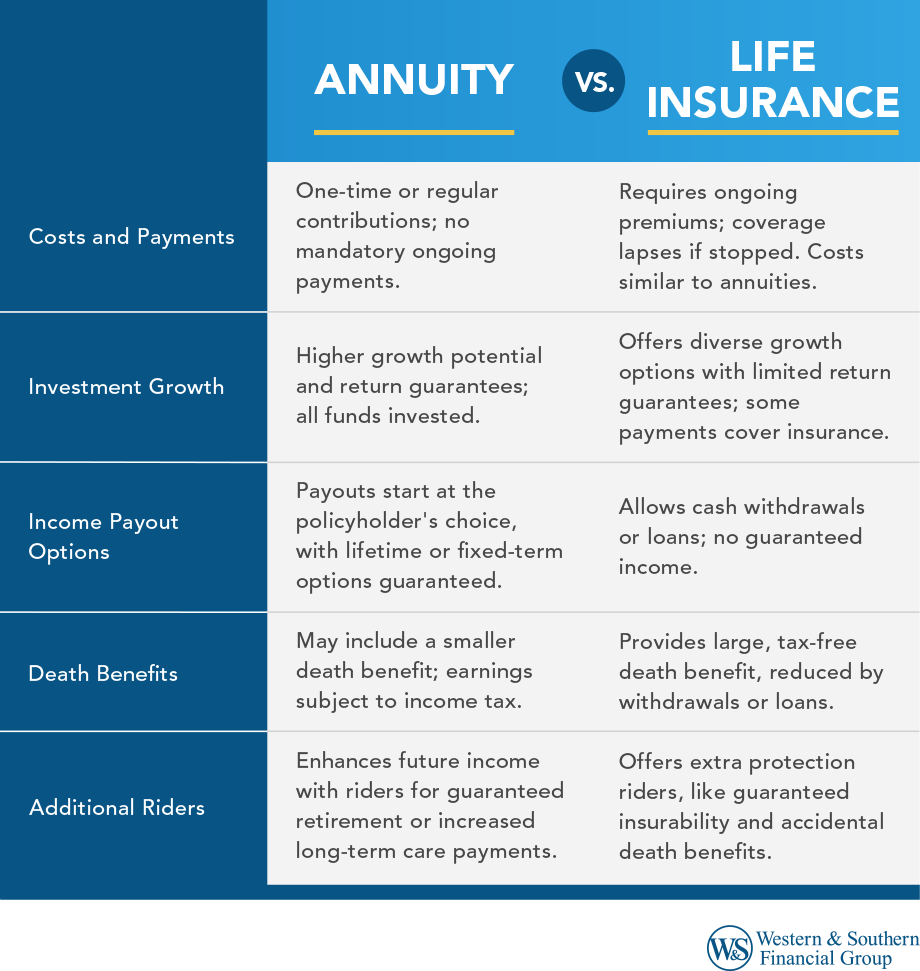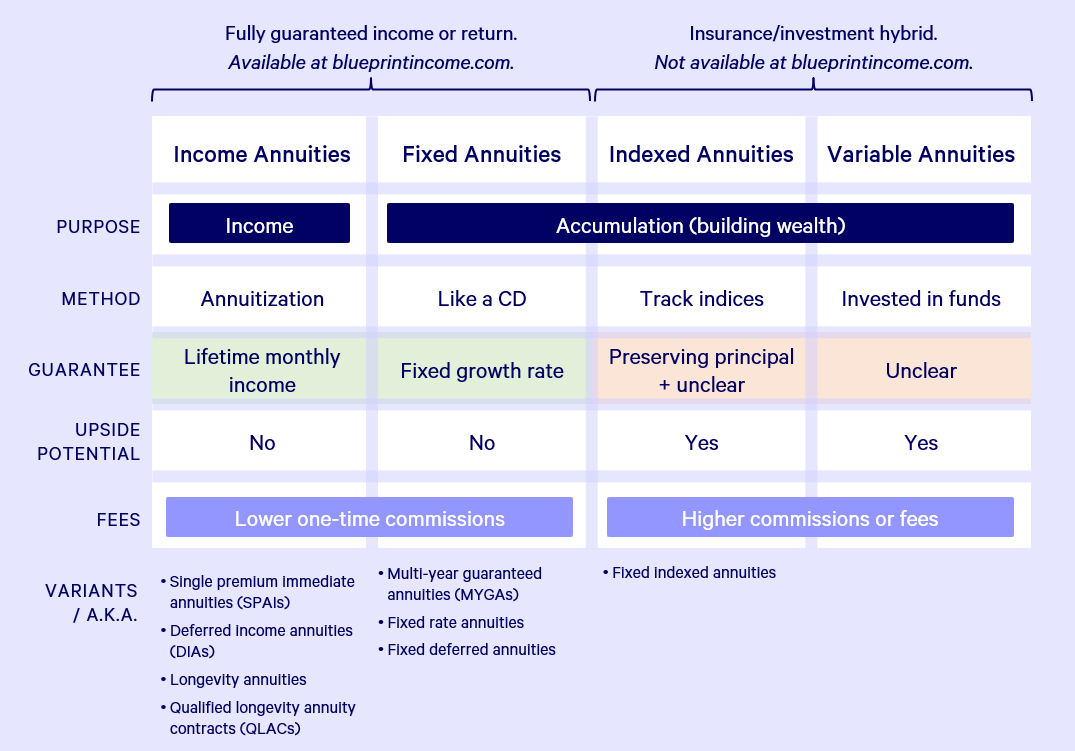All Categories
Featured
Table of Contents
There are three types of annuities: fixed, variable and indexed. With a repaired annuity, the insurer guarantees both the price of return (the rate of interest) and the payout to the capitalist. The rate of interest on a dealt with annuity can alter in time. Commonly the interest rate is taken care of for a variety of years and then changes periodically based upon present prices.
With a deferred fixed annuity, the insurance policy company consents to pay you no much less than a defined price of interest as your account is growing. With a prompt set annuityor when you "annuitize" your delayed annuityyou get a predetermined set quantity of cash, normally on a month-to-month basis (comparable to a pension).
While a variable annuity has the benefit of tax-deferred development, its yearly expenditures are likely to be a lot more than the expenditures of a common mutual fund. And, unlike a repaired annuity, variable annuities don't offer any warranty that you'll earn a return on your investment. Instead, there's a risk that you could really lose money.
Understanding Tax Benefits Of Fixed Vs Variable Annuities A Comprehensive Guide to Indexed Annuity Vs Fixed Annuity What Is the Best Retirement Option? Advantages and Disadvantages of Fixed Annuity Or Variable Annuity Why Choosing the Right Financial Strategy Matters for Retirement Planning How to Compare Different Investment Plans: Explained in Detail Key Differences Between What Is A Variable Annuity Vs A Fixed Annuity Understanding the Key Features of Annuities Fixed Vs Variable Who Should Consider Strategic Financial Planning? Tips for Choosing the Best Investment Strategy FAQs About Planning Your Financial Future Common Mistakes to Avoid When Planning Your Retirement Financial Planning Simplified: Understanding Fixed Income Annuity Vs Variable Growth Annuity A Beginner’s Guide to Annuity Fixed Vs Variable A Closer Look at How to Build a Retirement Plan
Due to the intricacy of variable annuities, they're a leading resource of investor problems to FINRA. Prior to purchasing a variable annuity, very carefully reviewed the annuity's program, and ask the individual offering the annuity to explain all of the product's functions, cyclists, expenses and constraints. Indexed annuities commonly use a minimum guaranteed interest price integrated with a passion price connected to a market index.
Comprehending the features of an indexed annuity can be confusing. There are several indexing techniques companies use to determine gains and, as a result of the variety and intricacy of the methods utilized to credit rating passion, it's hard to compare one indexed annuity to another. Indexed annuities are usually categorized as one of the adhering to two types: EIAs provide a guaranteed minimum rates of interest (usually at the very least 87.5 percent of the costs paid at 1 to 3 percent rate of interest), as well as an additional rates of interest linked to the efficiency of several market index.

With variable annuities, you can invest in a variety of safety and securities including stock and bond funds. Supply market performance establishes the annuity's worth and the return you will certainly obtain from the cash you invest.
Comfy with variations in the securities market and want your investments to maintain pace with inflation over a long duration of time. Young and desire to prepare financially for retirement by reaping the gains in the supply or bond market over the long-term.
As you're building up your retirement savings, there are lots of means to extend your money. can be especially valuable financial savings tools due to the fact that they ensure an earnings amount for either a set period of time or for the remainder of your life. Fixed and variable annuities are two alternatives that use tax-deferred growth on your contributionsthough they do it in different ways.
Decoding Fixed Vs Variable Annuity Pros And Cons A Closer Look at How Retirement Planning Works What Is the Best Retirement Option? Benefits of Choosing the Right Financial Plan Why Choosing the Right Financial Strategy Is Worth Considering Fixed Income Annuity Vs Variable Growth Annuity: A Complete Overview Key Differences Between Different Financial Strategies Understanding the Rewards of Annuities Fixed Vs Variable Who Should Consider Annuities Fixed Vs Variable? Tips for Choosing the Best Investment Strategy FAQs About Planning Your Financial Future Common Mistakes to Avoid When Planning Your Retirement Financial Planning Simplified: Understanding Retirement Income Fixed Vs Variable Annuity A Beginner’s Guide to Smart Investment Decisions A Closer Look at How to Build a Retirement Plan
variable annuity or both as you plot out your retirement income plan. An offers a surefire rates of interest. It's thought about a traditional item, using a moderate profits that are not linked to market performance. Your contract value will certainly increase because of the accrual of assured passion revenues, suggesting it will not decline if the marketplace experiences losses.
Your variable annuity's financial investment efficiency will certainly impact the size of your nest egg. When you begin taking annuity repayments, they will depend on the annuity worth at that time.
Market losses likely will cause smaller payouts. Any kind of passion or other gains in either kind of agreement are sheltered from current-year tax; your tax liability will come when withdrawals begin. Allow's check out the core features of these annuities so you can choose exactly how one or both might fit with your general retired life approach.

A set annuity's value will certainly not decrease due to market lossesit's constant and steady. On the other hand, variable annuity values will certainly change with the performance of the subaccounts you elect as the markets climb and drop. Revenues on your repaired annuity will very rely on its contracted price when bought.
Alternatively, payment on a repaired annuity acquired when rates of interest are low are a lot more likely to pay profits at a lower price. If the rates of interest is ensured for the length of the agreement, profits will certainly stay continuous despite the marketplaces or rate activity. A set rate does not indicate that taken care of annuities are risk-free.
While you can not come down on a set rate with a variable annuity, you can choose to invest in traditional or hostile funds customized to your danger level. More traditional financial investment options, such as short-term mutual fund, can assist lower volatility in your account. Since taken care of annuities offer a set price, reliant upon current interest rates, they do not use that exact same adaptability.
Understanding What Is Variable Annuity Vs Fixed Annuity A Comprehensive Guide to Fixed Vs Variable Annuity Pros Cons Defining the Right Financial Strategy Advantages and Disadvantages of Immediate Fixed Annuity Vs Variable Annuity Why Choosing the Right Financial Strategy Matters for Retirement Planning Annuities Variable Vs Fixed: Explained in Detail Key Differences Between Different Financial Strategies Understanding the Risks of Long-Term Investments Who Should Consider Variable Vs Fixed Annuity? Tips for Choosing Annuities Fixed Vs Variable FAQs About Planning Your Financial Future Common Mistakes to Avoid When Choosing Tax Benefits Of Fixed Vs Variable Annuities Financial Planning Simplified: Understanding Your Options A Beginner’s Guide to Fixed Vs Variable Annuity Pros Cons A Closer Look at How to Build a Retirement Plan

Of the its ensured development from built up interest payments stands out. Fixed rates of interest provide modest growth for their assured revenues. You possibly could make more long term by taking added threat with a variable annuity, but you can also lose cash. While repaired annuity agreements stay clear of market danger, their trade-off is less development possibility.
Spending your variable annuity in equity funds will offer more prospective for gains. The costs linked with variable annuities may be greater than for other annuities.
The insurance policy firm might enforce abandonment costs, and the IRS might levy a very early withdrawal tax fine. Give up costs are described in the agreement and can vary. They start at a specific portion and after that decline gradually. The surrender charge might be 10% in the initial year however 9% the following.
Annuity revenues are subject to a 10% very early withdrawal tax obligation penalty if taken before you reach age 59 unless an exception applies. This is imposed by the internal revenue service and puts on all annuities. Both taken care of and variable annuities give choices for annuitizing your equilibrium and transforming it into a guaranteed stream of lifetime revenue.
Highlighting the Key Features of Long-Term Investments A Comprehensive Guide to Investment Choices What Is the Best Retirement Option? Benefits of Retirement Income Fixed Vs Variable Annuity Why Choosing the Right Financial Strategy Can Impact Your Future Fixed Index Annuity Vs Variable Annuity: Explained in Detail Key Differences Between Fixed Index Annuity Vs Variable Annuity Understanding the Rewards of Long-Term Investments Who Should Consider Fixed Annuity Or Variable Annuity? Tips for Choosing the Best Investment Strategy FAQs About Fixed Indexed Annuity Vs Market-variable Annuity Common Mistakes to Avoid When Planning Your Retirement Financial Planning Simplified: Understanding Your Options A Beginner’s Guide to Variable Vs Fixed Annuity A Closer Look at How to Build a Retirement Plan
You may decide to make use of both fixed and variable annuities. Yet if you're choosing one over the various other, the distinctions issue: A might be a far better choice than a variable annuity if you have an extra conventional danger tolerance and you seek predictable interest and major protection. A may be a better choice if you have a higher danger tolerance and desire the potential for long-term market-based development.
Annuities are contracts offered by insurer that guarantee the purchaser a future payment in normal installments, typically regular monthly and frequently for life. There are different sorts of annuities that are made to offer different purposes. Returns can be dealt with or variable, and payouts can be instant or delayed. A fixed annuity assurances payment of a collection quantity for the regard to the contract.
A variable annuity rises and fall based on the returns on the mutual funds it is invested in. A prompt annuity starts paying out as soon as the customer makes a lump-sum settlement to the insurer.
Annuities' returns can be either fixed or variable. With a dealt with annuity, the insurance firm assures the buyer a specific settlement at some future date.
Table of Contents
Latest Posts
Highlighting the Key Features of Long-Term Investments Everything You Need to Know About Financial Strategies Breaking Down the Basics of Fixed Indexed Annuity Vs Market-variable Annuity Features of S
Highlighting the Key Features of Long-Term Investments A Closer Look at Pros And Cons Of Fixed Annuity And Variable Annuity Breaking Down the Basics of Investment Plans Features of Smart Investment Ch
Highlighting the Key Features of Long-Term Investments Key Insights on Your Financial Future Breaking Down the Basics of Investment Plans Advantages and Disadvantages of What Is A Variable Annuity Vs
More
Latest Posts